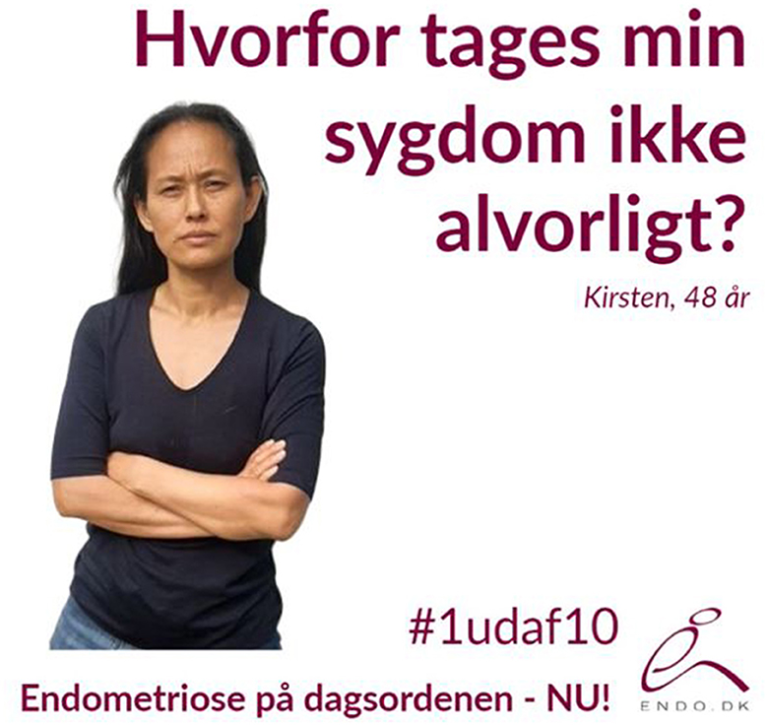The Power of Patient Voices: An Analysis of the #1in10 Endometriosis Social Media Campaign
Social media has revolutionized healthcare communication, offering a platform for individuals and organizations to share information, connect with like-minded individuals, and advocate for change. However, this accessibility also presents challenges, particularly the proliferation of misinformation and the difficulty in verifying content accuracy. Despite these risks, social media remains a powerful tool for health activism, exemplified by the Danish Endometriosis Patient Association’s (DEPA) #1in10 campaign. This campaign, initially launched in Denmark and later adapted for an international audience by the FEMaLe research project, utilizes patient-generated content and visual storytelling to raise awareness about endometriosis, a chronic and often debilitating condition affecting an estimated one in ten women of reproductive age worldwide.
Endometriosis, characterized by the growth of uterine-like tissue outside the uterus, often leads to chronic pain, inflammation, and a host of other debilitating symptoms. Due to a lack of awareness, persistent stigma surrounding menstrual health, and the subjective nature of pain, diagnosis is often delayed by an average of seven years. This delay, coupled with limited treatment options and inadequate research funding, underscores the critical need for effective advocacy and awareness campaigns like #1in10. The campaign’s innovative approach involves featuring photographs of individuals with endometriosis alongside their personal questions about the disease, directly addressing the challenges and frustrations they face. This personal and visual approach aims to humanize the condition, foster empathy, and challenge the prevailing misconceptions surrounding endometriosis.
This study employed a mixed-methods approach to assess the #1in10 campaign’s impact. Qualitative data were gathered through semi-structured interviews with seven women who participated in the English version of the campaign. Quantitative data, including metrics like reach, impressions, and engagement, were collected from the various social media platforms used to disseminate the campaign. The qualitative analysis revealed seven key themes: Taboo, Visibility, Awareness, Acknowledgment, Empowerment, Patient Experts, and Community. These themes illuminate the personal experiences of the participants and the profound impact the campaign had on their lives.
The interviews highlighted the pervasive taboo surrounding menstrual health and the challenges women face in discussing their endometriosis symptoms openly. Participating in the campaign allowed these women to break the silence, make their invisible illness visible, and challenge the normalization of menstrual pain. This act of coming forward was empowering, validating their experiences and fostering a sense of agency. The campaign also facilitated a deeper connection with the endometriosis community, providing a platform for shared experiences, mutual support, and collective advocacy. The women expressed gratitude for the opportunity to contribute to raising awareness and advocating for better care for future generations of endometriosis sufferers.
The quantitative analysis demonstrated the campaign’s success in reaching a broad audience and generating significant engagement. The Danish campaign, primarily disseminated through Facebook and Instagram, achieved a substantial reach and garnered thousands of likes. The English version, promoted on Twitter, Instagram, and LinkedIn, also performed well, particularly during Endometriosis Awareness Month in March 2022. The campaign content generated a higher level of engagement compared to other posts by the FEMaLe project, indicating the effectiveness of the patient-centered, visual storytelling approach. The data further revealed that the campaign resonated not only within the endometriosis community but also with the general public, demonstrating its potential to broaden understanding and reduce stigma.
This study underscores the power of patient voices in health communication and advocacy. By centering the lived experiences of individuals with endometriosis, the #1in10 campaign effectively humanizes the condition, challenges misconceptions, and fosters empathy. The visual format of the campaign, featuring photographs and personal narratives, enhances its impact and contributes to its success in reaching a wide audience. The study’s findings highlight the potential of social media campaigns to empower patients, build community, and advocate for change within the healthcare system. The combination of qualitative and quantitative data provides a comprehensive understanding of the campaign’s multi-faceted impact, demonstrating its effectiveness in raising awareness and promoting dialogue about endometriosis.
While the study’s findings are compelling, certain limitations must be acknowledged. The qualitative sample, while diverse in demographics and experiences, is not representative of all individuals with endometriosis. The reliance on volunteers from DEPA introduced a selection bias, as those most active in patient communities tend to be those most impacted by the condition. Similarly, the quantitative data, while providing valuable insights into reach and engagement, cannot definitively establish a link between online activity and offline behavior change. Future research could explore the long-term impact of the campaign, including its influence on policy changes, research funding, and healthcare practices. Additionally, gathering perspectives from the broader audience, both within and outside the endometriosis community, could provide a richer understanding of the campaign’s reception and its potential to drive meaningful action.
Despite these limitations, the study offers valuable insights into the potential of social media for health advocacy. The #1in10 campaign exemplifies how patient-centered, visual storytelling can effectively raise awareness, build community, and empower individuals to advocate for their own health. By giving voice to those often marginalized within the healthcare system, this campaign contributes to a broader movement to destigmatize menstrual health, promote open dialogue, and advocate for improved care for all those affected by endometriosis. The study’s findings underscore the importance of continued research and innovation in social media health campaigns to maximize their potential to drive positive change in individual lives and within the healthcare landscape.


